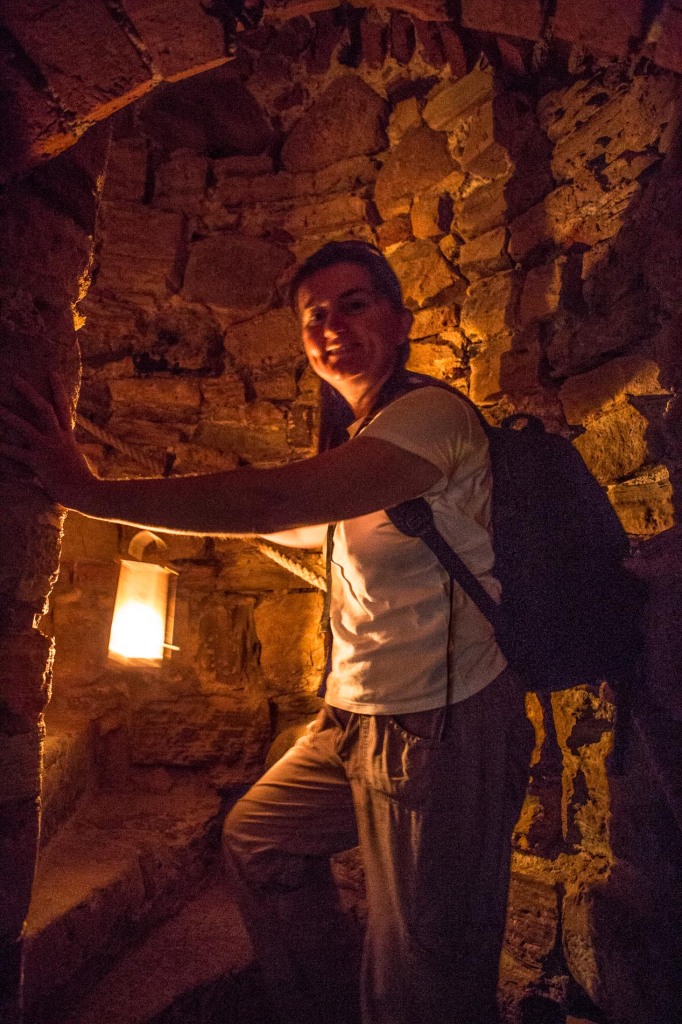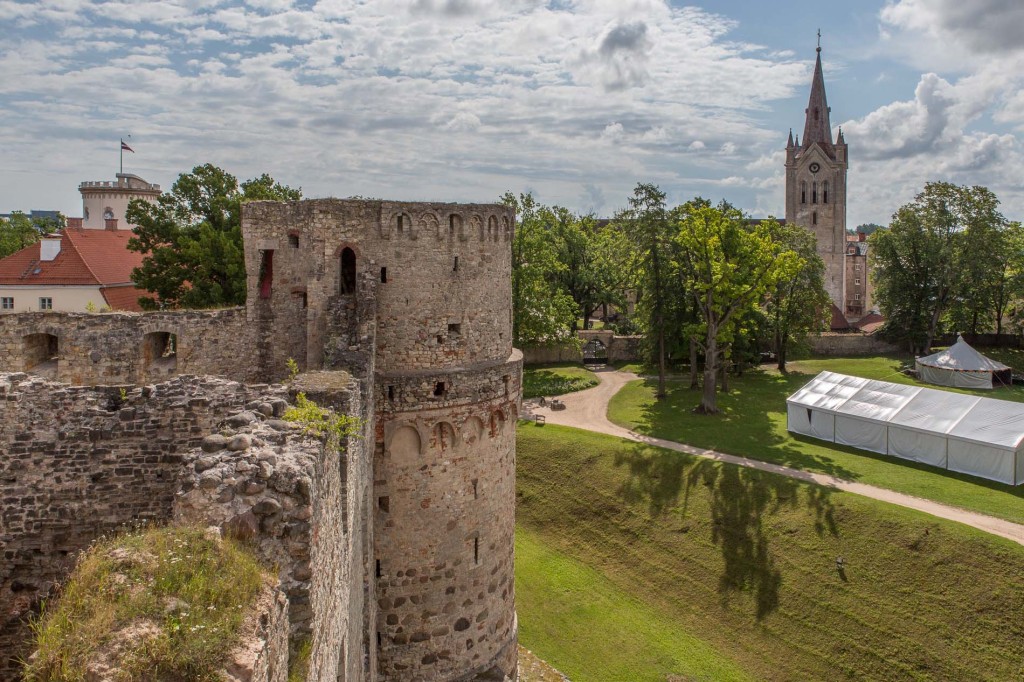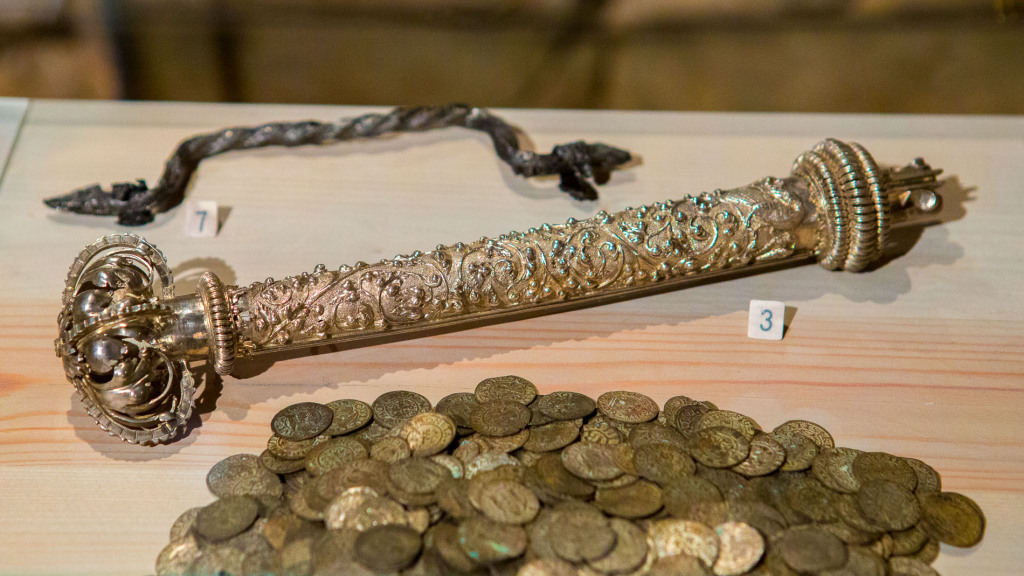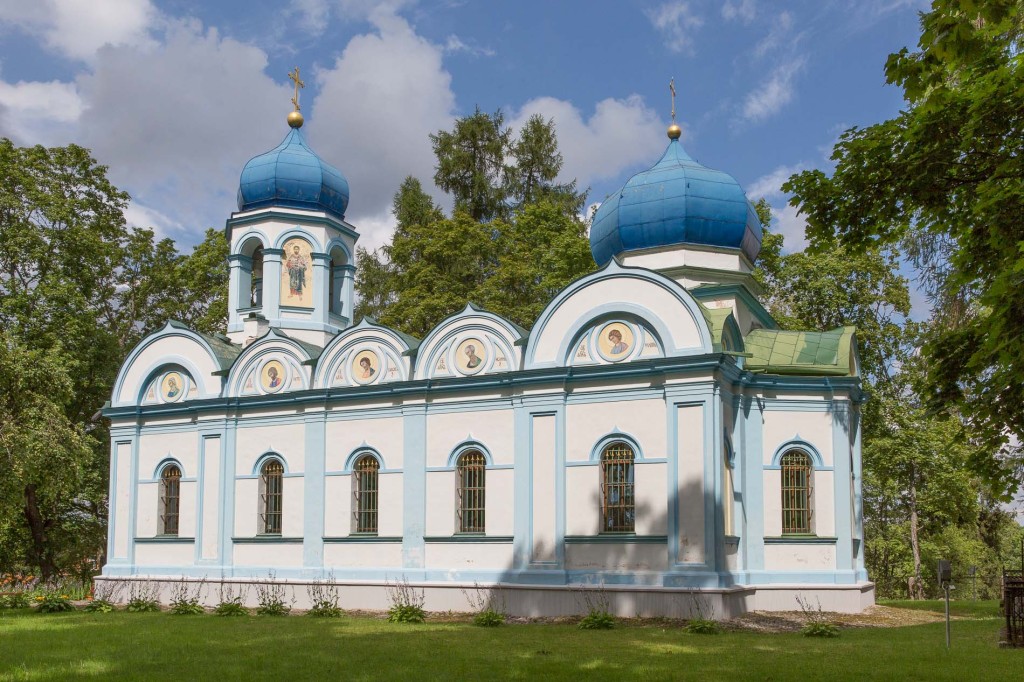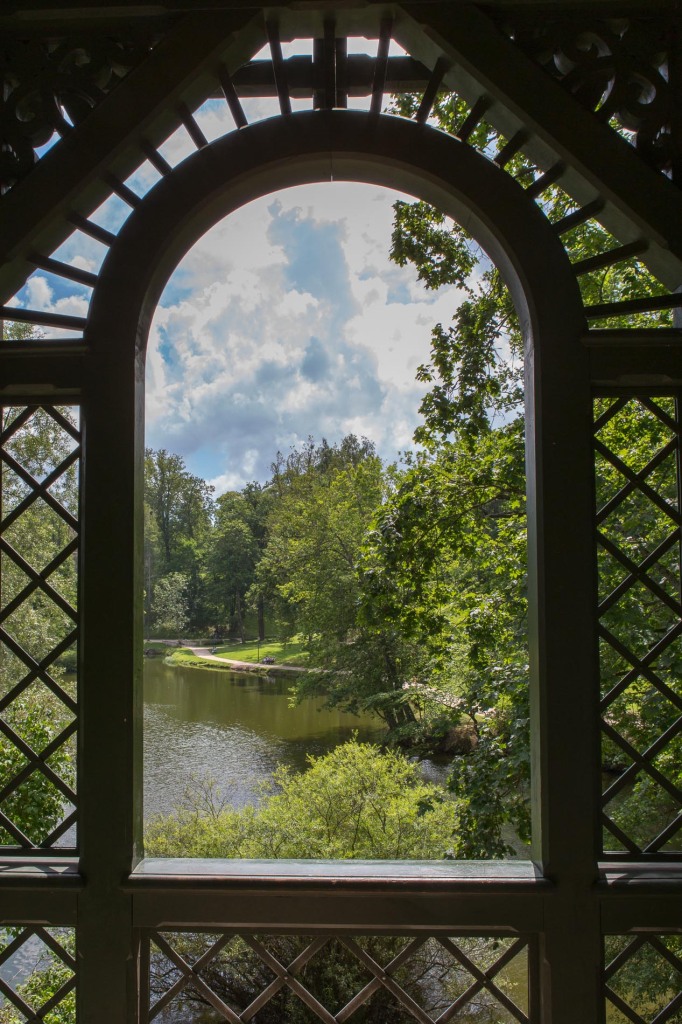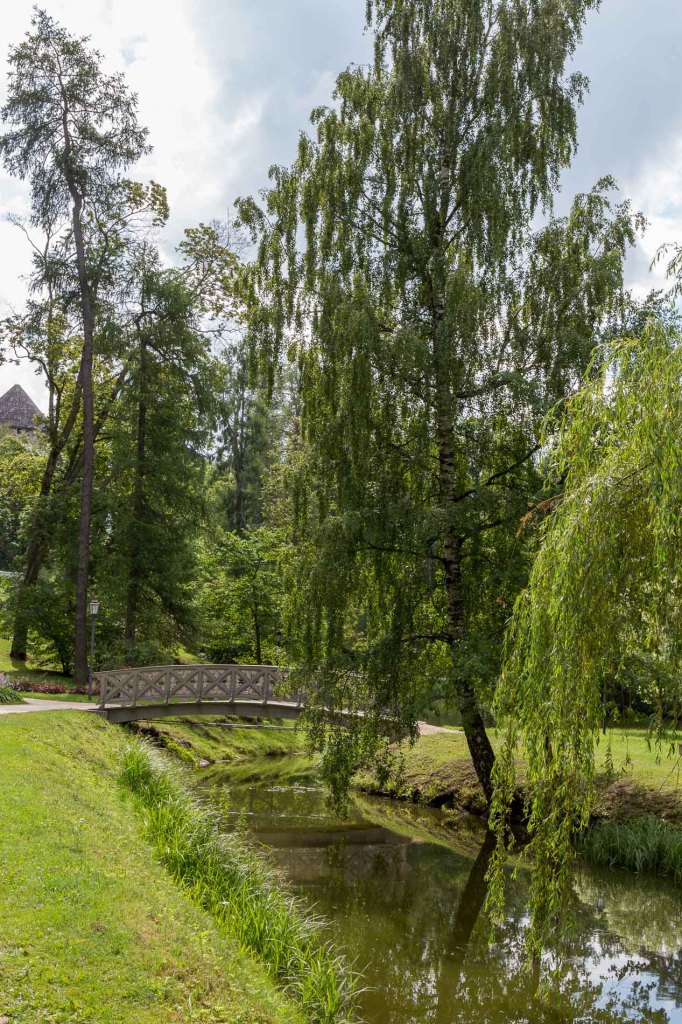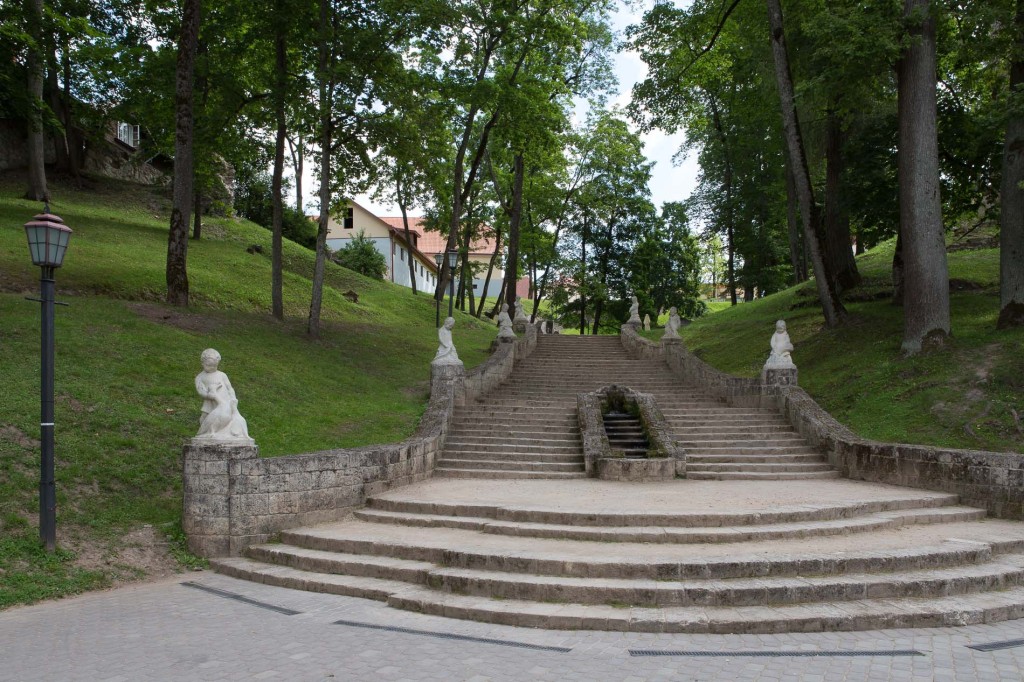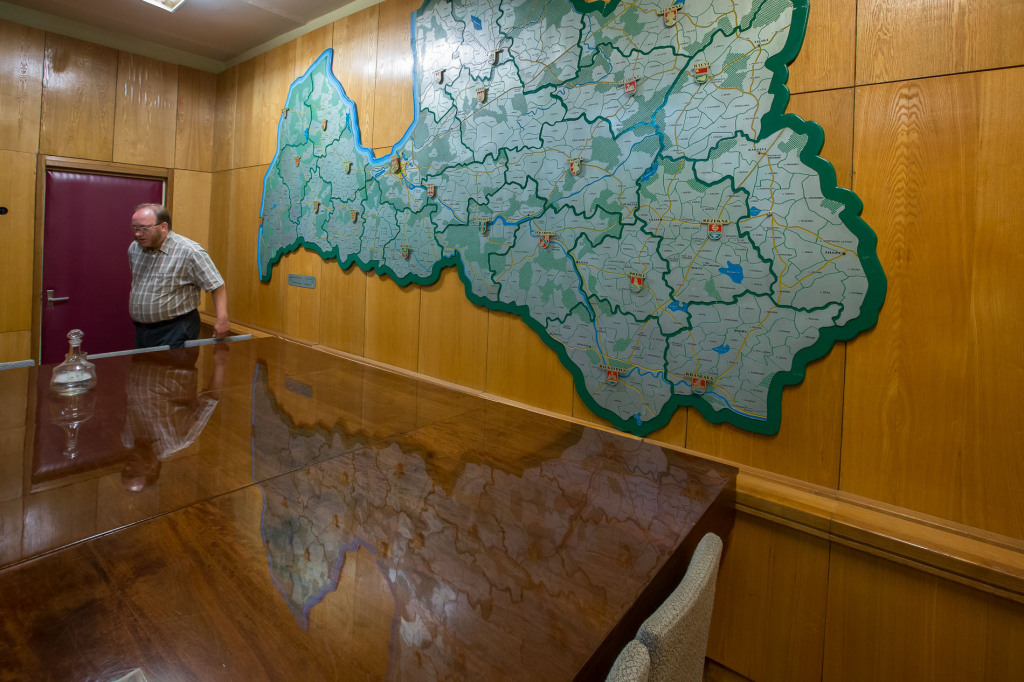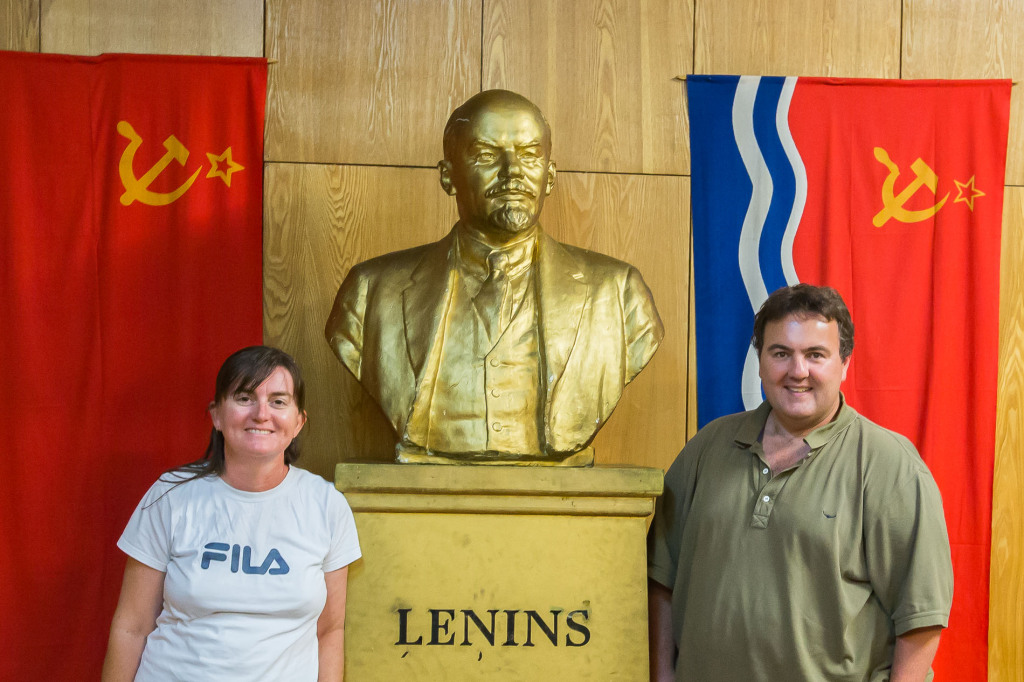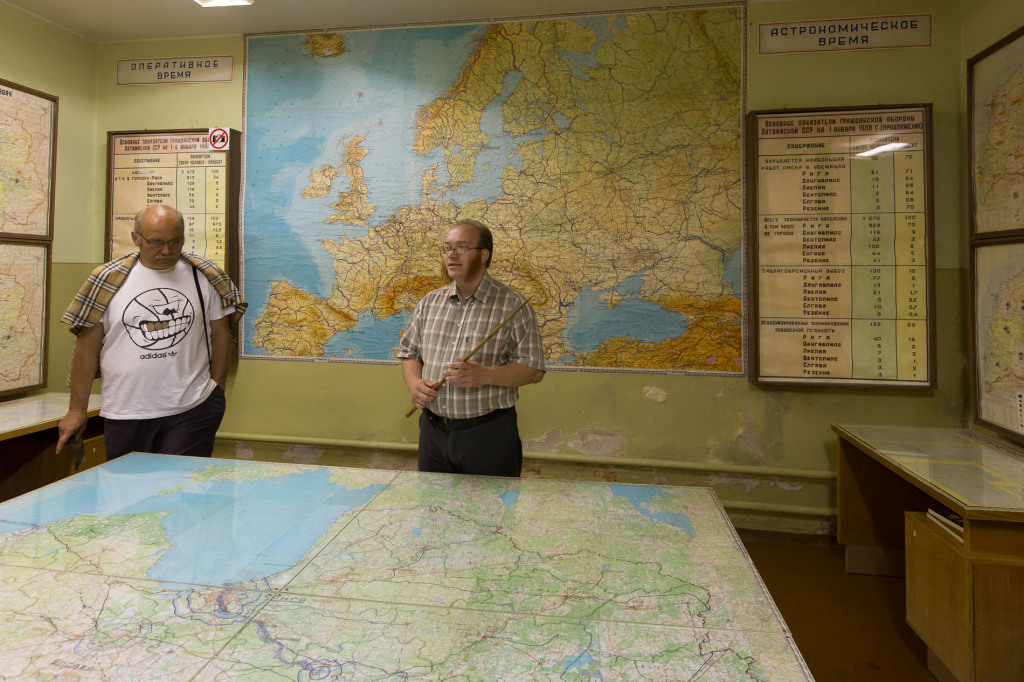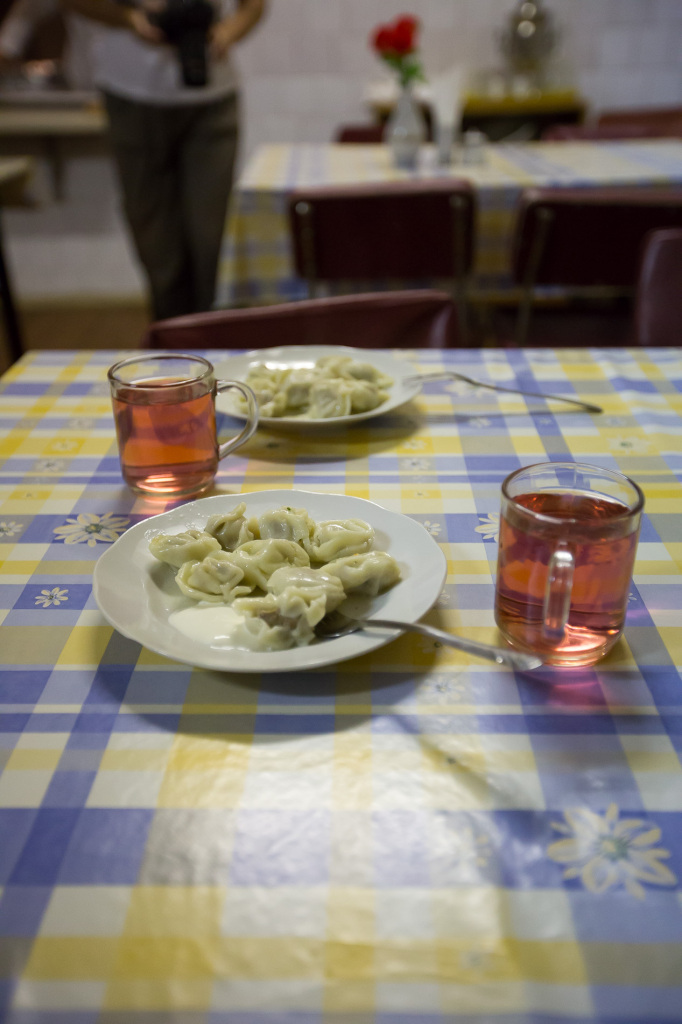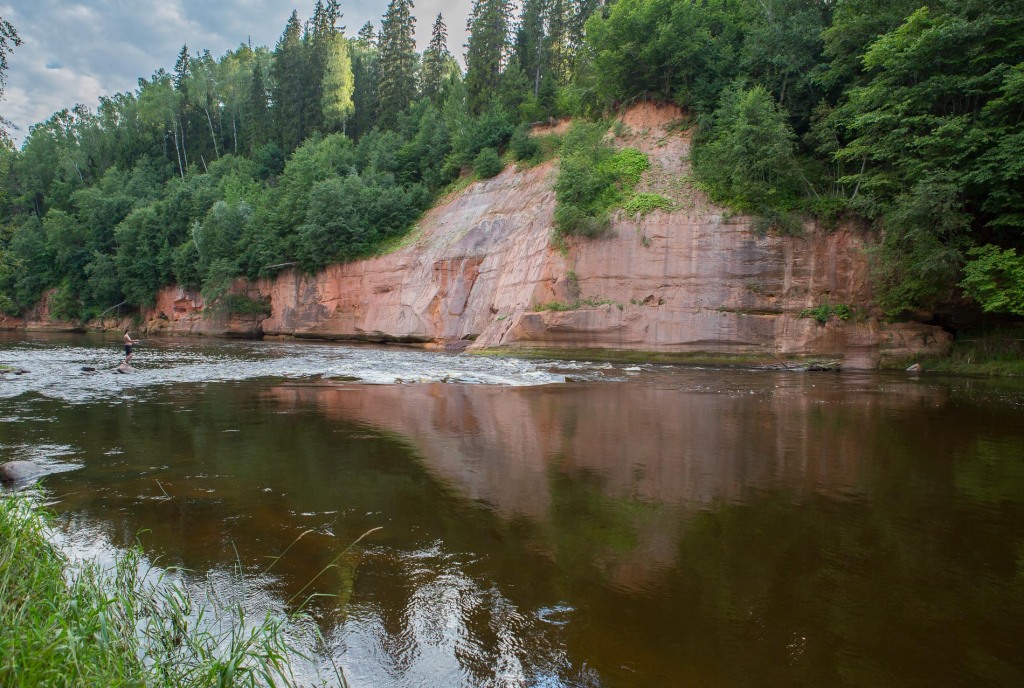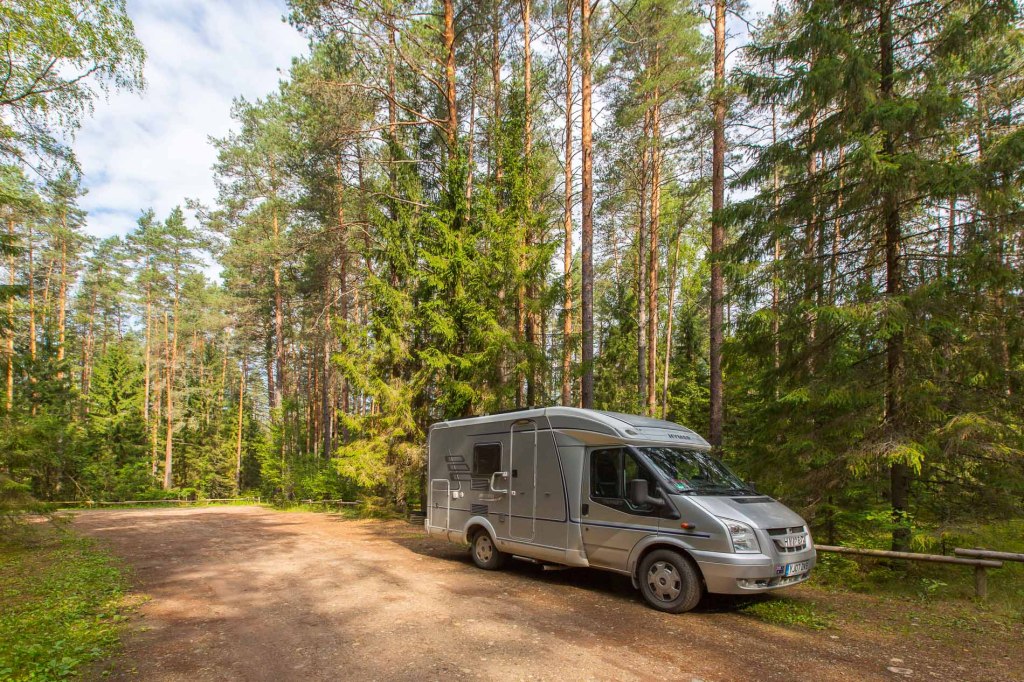Country: Latvia
Distance travelled: 46km
Weather: Sunny and warm with an afternoon thunderstorm
One of the good things about last nights’ camp spot was its’ proximity to Cēsis. We managed to get out of bed, breakfast, pack up and relocate the still-drying washing so Mark could drive and still make it back to the castle at Cēsis by 10am so we were there when they opened.
According to Wikipedia:
German crusaders known as the Livonian Brothers of the Sword began construction of a castle Wenden near the hill fort in 1209. When the castle was enlarged and fortified, it served as the residence for the Order’s Master. In 1577, during the Livonian War, the garrison destroyed the castle to prevent it from falling into the control of Ivan the Terrible, who was decisively defeated in the Battle of Wenden in 1578.
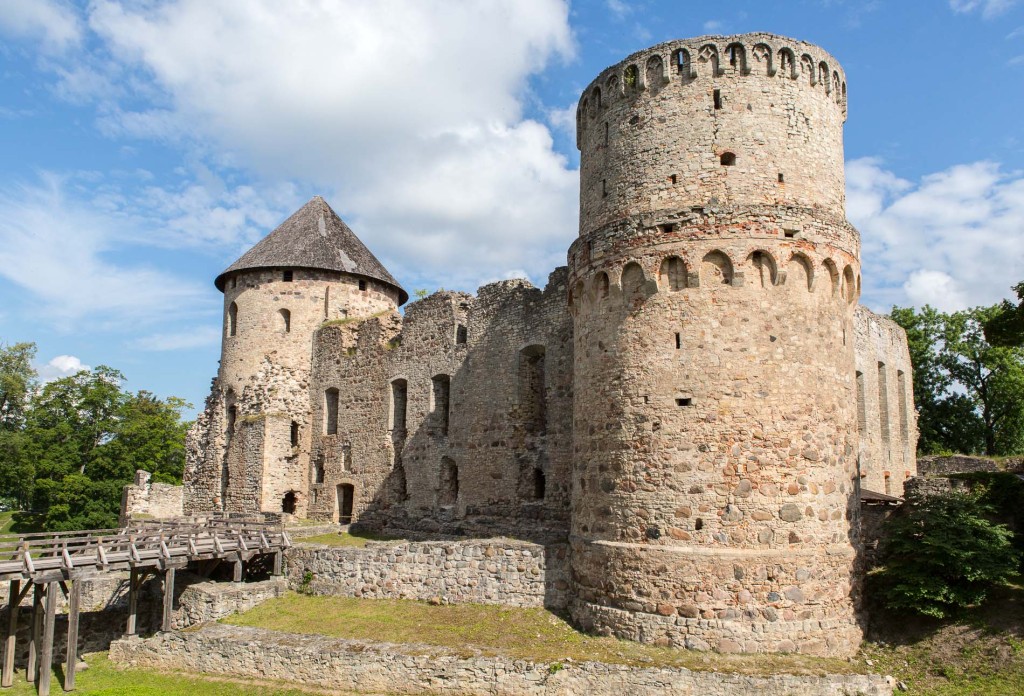
We were issued with a candle in a lantern box and given a swift explanation of where to go. The first area we ventured into was the dungeon in the base of one of the towers. The entry was a narrow hole in the floor with a steep ladder of sorts which seemed to be made of concrete reinforcing bar, not the thick stuff either. Just as the main room was reached, a sharp corner needed to be negotiated as the ladder ended on a platform and turning at right angles became a very steep step ladder. Once down on the floor, I could imagine just how unpleasant this space could be, it was already cold despite the heat above ground, and with just one narrow window slit to let in light and air, it would have been dark as well.
A group of cyclists joined us down below, their shoe cleats rattling on the steel stair. We waited for them to climb back up and then set about escaping ourselves. With a little contortionism, I managed to negotiate the halfway corner but came close to being wedged when my backpack caught at the narrow throat of the entry hole. With great difficulty I managed to get a foot onto the ladder and heave myself up. Mark assisted by reaching down and bodily lifting the backpack clear as I scuttled up the last few rungs, arms still in the bag straps but no longer carrying the weight.
Wandering about further, we were impressed by the size of the place which must have been huge. The spiral steps up the remaining intact tower showed the purpose of the lantern and we climbed, clinging to the rope handrail, trying to illuminate the worn stone steps with our guttering candle. Somewhere at the top, while we were admiring the view, the candle finally went out, leaving a puddle of wax in the bottom of our lantern and we had to face the stairs in the dark. One hand on the rope and one on the centre column seemed to be the answer as we steadily climbed back down, pausing at the still quite intact floors to let other visitors past.
The new castle was included in our entry fee of €5 each so we looked through the museum displays in there too. It had been built on part of the old castle and archeological digs had uncovered the original foundations as well as a treasure trove of coins and other articles left behind when the old castle had been destroyed by its occupants in 1577.
From there we entered the old town of Cēsis, still laid out on its original street plan and showing areas that had benefited from the recent tourism. We wandered about past St. John’s Church, built in the late 1200’s, and the blue Christ Transfiguration Orthodox Church, a much newer building, and around the park and ornamental lake built by later residents of the new castle in 1812.
Eventually we ended up back at the van where we were going to have to stay as a large tour bus was blocking our easy exit. It wasn’t long, the passengers gathered as we ate some biscuits and we were soon on the move again. Not far though, just back to last nights carpark as we had decided to celebrate the fact that we would have managed our target budget this week if it hadn’t been for the new tyres so we went out for lunch.
We chose a Latvian tavern, according to the signs, and picking from the specials board, I had pork chop with chanterelle sauce while Mark had pork chop with cheese and ham. It wasn’t actually a pork chop as we know it, more a battered pork schnitzel but it was tasty all the same. I also tried a glass of kvass, a popular drink in these parts. It tasted like someone had soaked a slice of black bread in a glass of Coca Cola to me, strange but not unpleasant. While we sat eating a rain storm hit, filling the air with the smell of rain on hot roads and cooling everything down pleasantly.
After lunch we decided to head to Skalupes near Līgatne to see about a tour of the secret soviet bunker located under a still operating sanitarium there. We gathered from the website that a tour would have to be booked and we hoped to arrange that for tomorrow. Luckily we had lots of information from other blogs we read and knew to ask at the sanitarium reception. Just as we walked in a tour was forming to start at 4pm, a time not mentioned on their website. Mark got in line to buy two tickets while I dashed back to the van for our cameras. The two tours for Latvian and Russian speakers departed and we were left with just four others for the English language tour.
From the internet:
75 kilometers east of Riga, a huge nuclear bunker was built under the Līgatne Rehabilitation Centre. The bunker was the shelter and command centre for the Latvian communist political and administrative leadership in the event of chemical or nuclear war. 250 people could survive in isolation in the bunker for 3 months. The nickname of the top-secret bunker among the communist nomenclature of the Soviet period was the “Pansionat” (Pension house). The bunker was planned in 1968 by the Latvian Central Soviet Committee but first became operational in 1982. The bunker is 2,000 sq. m. in size and is built 9 meters underground, of which 5 meters are made of steel and concrete plates and gamma ray protection from lead plate.
Our guide, Oscar, was awesome. He knew an incredible amount of information and history about the installation and could answer any question. He took us though the communications rooms, the meeting rooms, the air, water and electricity workshops and into the canteen where we received a glass of some unknown red juice and a serve of pelmeni just like what would have been served during the active years. It was with some regret that we finally returned above ground, surprised that nearly two hours had passed.
A short drive away, we stopped at Kūko Cliffs in another national park. We took a stroll in the early evening, discovering a group of canoeists camping on the river bank and then returned to the van, too full to bother with dinner tonight.

